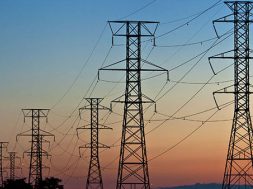
CSIR bats for green ‘biocoal’
Against the backdrop of Prime Minister Narendra Modi’s clarion call to the scientists to find a ‘concrete solution’ to deal with the problem of stubble burning, the country’s premier research agency, Council of Scientific and Industrial Research (CSIR) has pitched in for conversion of paddy biomass into green ‘biocoal’ to be used in thermal power plants as one of the possible environment-friendly steps to check the menace which chokes Delhi and NCR region, particularly during winters.
Scientists from one of the CSIR’s labs, National Physical Laboratory (NPL) in a study published in the latest edition of The Current Science, said this conversion of paddy stubble into green product biocoal through torrefaction process would also help farmers to earn money using the agriculture residue.
They maintained that the biocoal which has the calorific value equivalent to that of bituminous coal can be used as an alternative fuel in thermal power plants. By optimizing the processing parameters of torrefaction process, desired calorific value of torrefied product has been archived, as per the study conducted in Haryana. It also pointed out that 10 per cent use of torrefied product with coal can consume 140 million tonnes of rice straw and as a consequence, it reduces the consumption of fossil fuels.
If adopted, the technology which is already in vogue in the western countries can help reduce not only consumption of fossil fuels, but also cut down the environmental pollution and greenhouse gas (GHG) emission. Similarly, residue of other crops like wheat, sugarcane, oilseed, maize and cotton which is estimated to be around 500 million tonnes in the country, can be used as biocoal in thermal plants after torrefaction.
The suggestion holds importance given that presently, to dispose the rice straw for making field ready for next crop, farmers are burning it in the fields itself particularly in States like Punjab, Haryana, Uttar Pradesh, Jammu Kashmir and Uttarakhand posing lot of environmental, health and economic issues.. This despite State Governments’ offers such as subsidy, machines as well as warning to impose penalty in case of violation.
However, the team of scientists comprising of SR Dhakate, Abhishek K Pathak, Prateek Jain, Mandeep Singh, B P Singh, KM Subhedar, SS Sharda and RK Seth, said that “once farmers get monetary incentive for the waste, burning can be stopped in the fields and it can be used as a source of renewable energy and the country can become self-reliant for energy generation.”
Modi had last December while addressing the farmers’ conclave “Krishi Kumbha” in Lucknow through video conferencing too raised his concerns on increasing smog caused by stubble burning as he urged scientists to find concrete solution to stubble burning.
Being agriculture-based country, India generates more than 600 million tonnes of biomass waste from different crops and produces 140 million tonnes of rice straw alone annually.
Most of the stubble burning takes place over three weeks in October-November, releasing particulates and smog-forming carbon monoxide and nitrogen oxide, which drift from the fields over almost the entire Indo-Gangetic plain. This pollution contributes around 12-60 per cent of particulate concentrations depending on the generation of other pollutants in different locations, winds, temperature and other local factors, according to reports.












